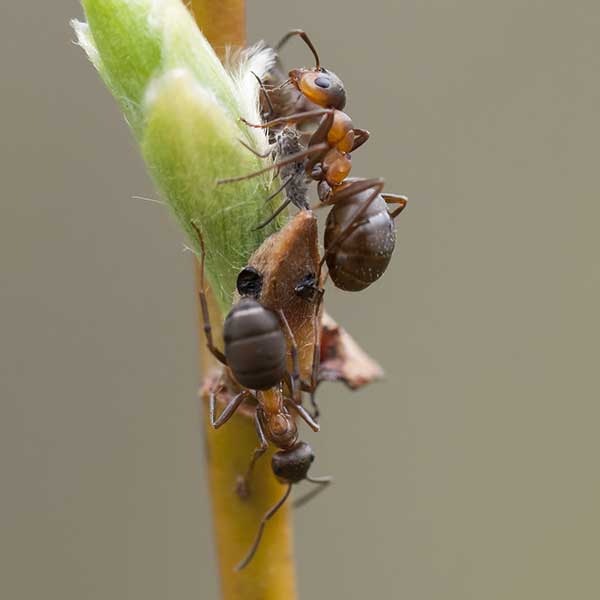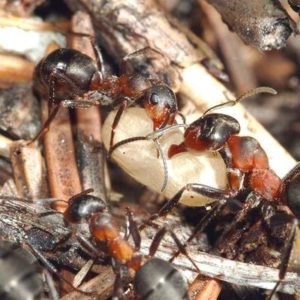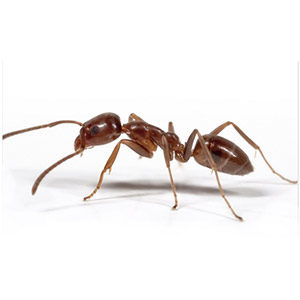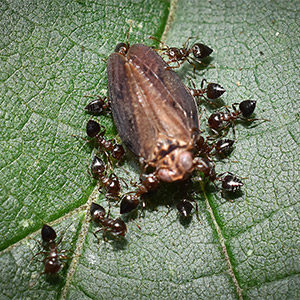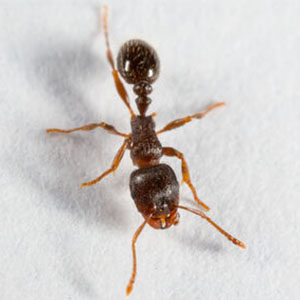Description
| Size | 2.5 to 5.5 mm |
| Characteristics | Dark heads with velvety black abdomens and a reddish thorax. |
| Legs | 6 |
| Antennae | Yes |
| Wings | Male and female reproductives have wings. |
| Habitat | Typically nests in the crooks or hollow spaces of trees or beneath stones. |
| Habits |
|
| Velvety Tree Ants in the Pacific Northwest | Velvety tree ants get their common name from their smooth and velvety abdomen, and from the fact that they typically nest inside trees. These ants are known for releasing a distinct and unpleasant odor if their colony is threatened or if they are crushed, which some have said smells like “rotten coconuts”. Velvety tree ants are often mistaken for carpenter ants because of their appearance and habit of nesting in trees. However, velvety tree ants leave behind softer-textured frass – which looks like sawdust – while carpenter ants produce much coarser frass. |
| Velvety Tree Ant Habitat | Velvety tree ants are omnivores that feed on a wide range of substances, including proteins and sugars. Outdoors, these ants are typically found in the nooks and crannies of trees or beneath stones. Popular trees for these ants include oak, pine, sycamore, and cottonwood. If these ants make it indoors, their nests look very similar to those of carpenter ants. By carving out tunnels and nests in wood, velvety tree ants can cause significant damage to homes and buildings. |
| Velvety Tree Ant Behaviors, Threats, and Dangers | Velvety tree ants are an aggressive species. Not only will they bite, but they have also been known to spray intruders with odorous secretions. During an infestation, homeowners may be able to detect this “rotting coconut” scent even without disturbing the nest. Though velvety tree ants do not ingest wood, they will chew through wooden structures and leave behind small piles of frass, which resembles sawdust. To keep an infestation from growing beyond control, it is important to call a professional ant exterminator if you suspect velvety tree ants are invading your home. |
